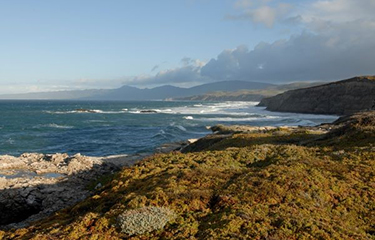NOAA seeking feedback on 7,000-square-mile marine sanctuary off California coast

NOAA announced on 9 November it is seeking public comment on the “first steps” of designating a new national marine sanctuary in a 7,000-square-mile area off the coast of the U.S. state of California.
The new area would be adjacent to California's San Luis Obispo and Santa Barbara counties, according to NOAA.
“The designation of a Chumash Heritage National Marine Sanctuary would protect the region’s important marine ecosystem, maritime heritage resources, and cultural values of Indigenous communities, while allowing NOAA to manage compatible uses within its boundaries,” NOAA said.
NOAA is considering the area as part of its efforts to meet the directions of an executive order given by U.S. President Joe Biden in January, which called for agencies to “seek a holistic approach to curbing and building resilience to climate change and its impacts,” NOAA said. Part of that order was a “30 by 30” goal that calls for the protection of 30 percent of the U.S.’s lands and oceans to be protected by 2030.
According to NOAA, advancing the marine sanctuary – and wind energy development in the area – would demonstrate the “Biden-Harris administration’s commitments to these important and complementary goals.”
“This administration is committed to taking a holistic approach to addressing the climate crisis,” U.S. Secretary of Commerce Gina M. Raimondo said in a release. “Together, the Department of Commerce, through NOAA, and the Department of Interior, along with many partners, are increasing resilience by conserving and restoring the natural and cultural resources that benefit our country and our planet; working to reduce emissions by fostering clean energy like offshore wind; and supporting frontline communities by helping them build back smarter and adapt to the impacts of climate change.”
According to NOAA, the Northern Chumash Tribal Council, led by its late chief, Fred Harvey Collins, nominated the area for a potential marine sanctuary designation in 2015, noting it would preserve tribal history while safeguarding marine resources.
“This proposal demonstrates the Biden-Harris administration’s commitment to lifting up community-led efforts to conserve our lands and waters and strengthen our economy,” U.S. Secretary of the Interior Deb Haaland said. “Local voices, Indigenous knowledge, and collaborative stewardship will be integral to our efforts to bolster community resilience, protect our natural resources, and build a clean energy economy.”
The new area would include kelp forests, sandy beaches, coastal dunes, and wetlands that serve as “nurseries for numerous commercially and recreationally fished species.”
“The proposed sanctuary will recognize and preserve Chumash tribal heritage, protect the area’s rich biodiversity, and build resilience to changing ocean conditions,” NOAA Administrator Rick Spinrad said. “This special section of coast supports a way of life for many communities that rely on commercial fishing and enjoy recreational fishing, kayaking, surfing, diving, and wildlife-watching.”
NOAA is requesting specific input on the sanctuary name, its boundary, compatible uses, threats that the sanctuary would address, and “how best to promote marine science and education initiatives and other topics,” it said.
“The recent oil spill in California is a costly and harmful reminder that we need to do more to protect our coastal communities from the threats that our ocean is facing,” White House Council on Environmental Quality Chair Brenda Mallory said. “The Chumash Heritage sanctuary proposal and the Morro Bay wind energy area provide an opportunity for communities to help shape how we both protect the region’s extraordinary marine and cultural resources and harness the ocean’s clean-energy potential.”
Photo courtesy of NOAA






Share